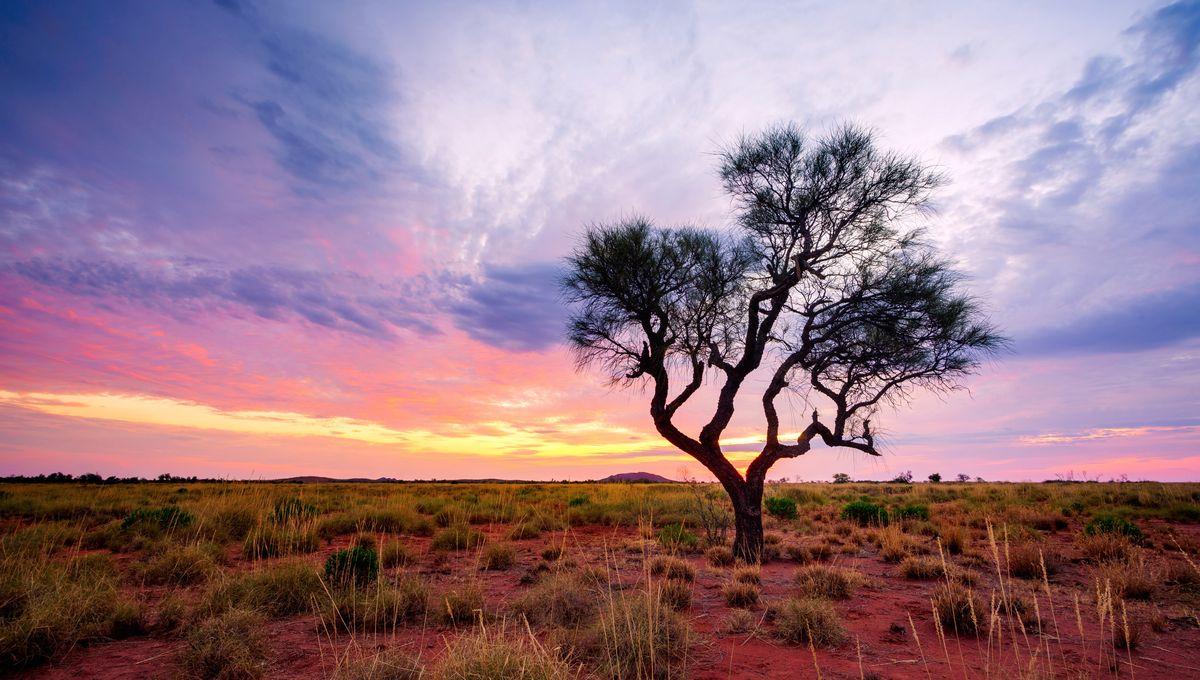Ancient Meteor Crater Thought To Be World's Oldest May Be 800 Million Years Younger Than We Realized

Ancient Meteor Crater Thought To Be World's Oldest May Be 800 Million Years Younger Than We Realized
Earlier this year, researchers announced the discovery of what they believed to be the world’s oldest impact crater. According to their results, the crater was created over 3.5 billion years ago when a meteorite crashed into what is now a region of Western Australia. This was an incredible and exciting find at the time, but unfortunately it may not be correct as a different group of geologists think the crater is much younger than previously thought. The results are a powerful reminder that dating the Earth’s history using rocks is not always straightforward.
At present, the oldest known (and agreed on) ancient impact crater is the 2.23-billion-year-old Yarrabubba structure in Western Australia. This is pretty damned old, but finding something older has been an ongoing problem. This is largely because, so the argument goes, older specimens have been destroyed by subsequent impact events, erosion, burial, or other geological processes. This is why the geological community got excited by the latest discovery back in March 2025. The reports indicated that this crater was formed around 3.5 billion years ago and was over 100 kilometers (62 miles) in diameter. It has been proposed that the impact that created this crater could have contributed to the formation of continental crust in the Pilbara, a large, dry region in north Western Australia. This is because the same team that identified the crater had previously argued that the energy needed to originally create this continental crust could have only come from space, in the form of one or more massive collisions. In this instance, the energy released by the impact blast would have sent out enormous amounts of material and melted rock while also producing blobs of volcanic material in the mantle, which evolved into this crust. But a new study challenges this idea and instead posits that the crater is only around 2.7 billion years old – around 800 million years younger than was previously estimated. In addition, the researchers believe the crater may also be smaller than previously assumed, reaching a comparatively much smaller size of only 16 kilometers (10 miles) in diameter. Ultimately, if this is correct, then this impact wouldn’t have contributed to the formation of the continent in any way. How did they reach this conclusion? The two studies used very similar approaches during their research, including observations such as radiometric dating, which measures the age of rocks or organic matter by way of the radioactive isotopes they contain. Neither study was able to find any material that indicated an impact age using this method. To overcome this, they both relied on the law of superposition, a geological principle stating that rock layers are laid on top of one another as time progresses. On its simplest level, this means that the older layers of rock are to be found under younger ones. This is where things become tricky. According to the first researchers, a sedimentary layer of rock known to have been deposited 3.47 billion years ago included what are called “shatter cones”. These are basically fossilized imprints of the shockwaves caused by massive impacts on rock. The presence of these cones in this rock implied that the impact had to have occurred around this time. But this may not be a sound conclusion. “Our investigation found shatter cones in the same 3.47 billion-year-old rocks, but also in younger overlying rocks, including lavas known to have erupted 2.77 billion years ago,” Aaron J. Cavosie, Senior Lecturer at the School of Earth and Planetary Sciences at Curtin University and Alex Brenner, a Postdoc at the department of Earth and Planetary Sciences at Yale University wrote in a Conversation piece. This, Cavosie, Brenner and colleagues conclude, limits the age of this crater to only 2.77 billion years of age. Importantly, this is not the same as saying how old the crater is; it only provides a maximum mark for it. So, there is a chance the crater is younger still – the team are working on dating the crater with isotopes found at the site. “A 16-kilometer crater is a far cry from the original estimate of more than 100 kilometers. It’s too small to have influenced the formation of continents or life. By the time of the impact, the Pilbara was already quite old,” they write. The study is published in Science Advances.


